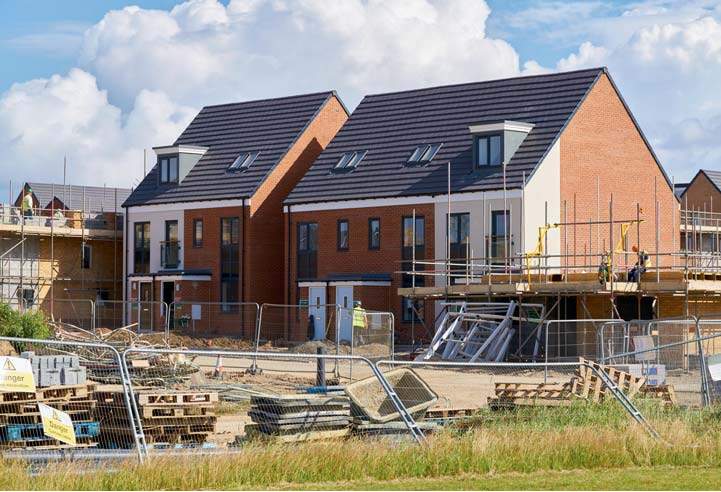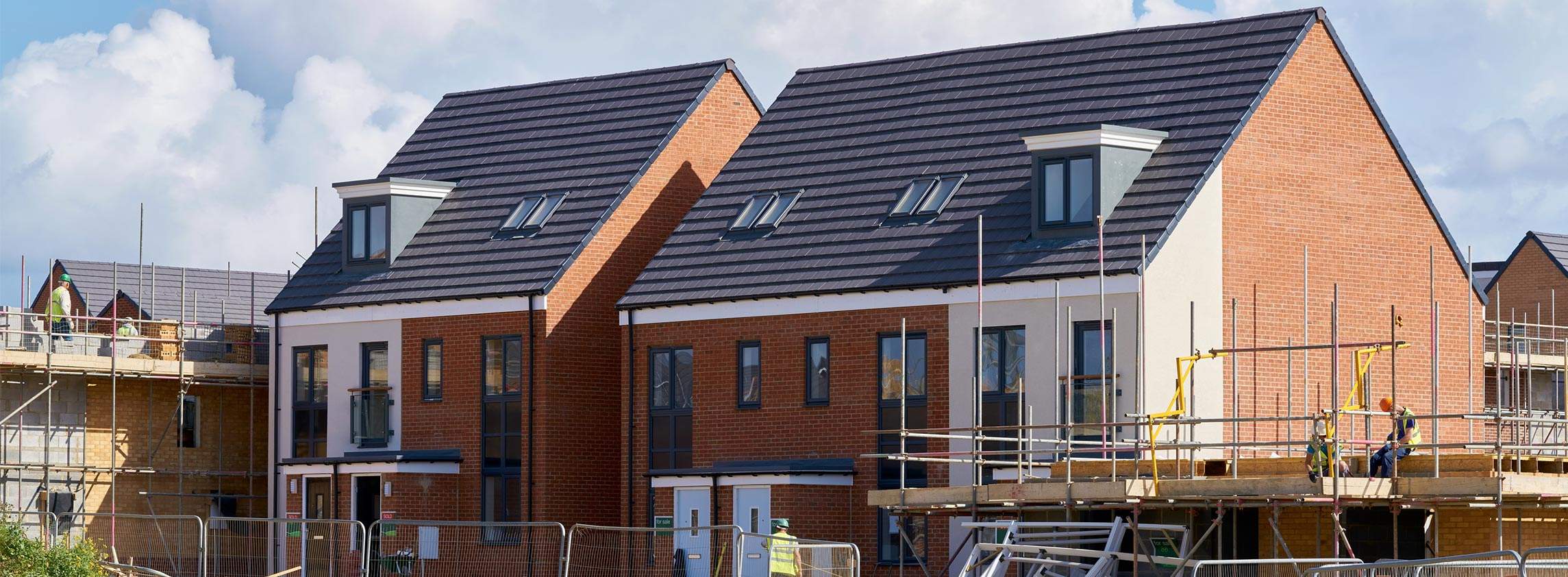Opportunities, challenges and the five-year outlook for the affordable housing sector
Affordable Homes Programme 2021–26 provides a strong basis for affordable delivery
The affordable housing sector is committed to maintaining investment in new homes, despite facing challenges of building safety and decarbonisation on existing stock. The £11.5 billion Affordable Homes Programme 2021–26 is expected to fund the delivery of 180,000 homes over the next five years. That makes this programme the largest annual investment in affordable homes since the 2008–11 National Affordable Housing Programme. The current affordable homes programme also includes an additional £700 million left over from the 2016–21 programme.
There will be greater diversity in who is delivering new affordable housing over the course of this programme. The latest wave of strategic partnerships opened up funding to local authorities and for-profit providers for the first time. Homes England has announced four for-profit providers as strategic partners.
And in London, the GLA selected 26 London boroughs as partners in addition to one for-profit provider. Collectively, the strategic partners have ambitions to deliver nearly 119,000 homes.
Grant vs. Section 106
We expect affordable housing delivery to be more reliant on grant funding from the Affordable Homes Programme than on Section 106 over the next five years, marking a shift away from recent trends.
Overall housebuilding isn’t expected to reach pre-pandemic levels until 2026. This is the result of falling new homes delivery through the Covid-19 pandemic and the longer-term fall in housing starts. Affordable housing delivery could average nearly 60,000 new homes each year over this period, comprising a large share of housebuilding activity (see Q3 2021 completions forecasts) and a significant increase on current affordable housing delivery. On average, 50,000 new affordable homes have been delivered each year since 2018.
Section 106 volumes are expected to fall over the next five years, averaging 25,000 homes per year, a reduction of 10% compared to the last three years
Lydia McLaren, Associate, Residential Research
A higher proportion of that delivery will be grant-funded than in recent years. Section 106 volumes are expected to fall over the next five years, averaging 25,000 homes per year, a reduction of 10% compared to the last three years. Market demand for new homes is expected to be slightly lower post Help to Buy, resulting in a lower level of developer contributions to affordable housing.
The Government also announced in June 2021 that it requires at least 25% of developers’ Section 106 contributions to be First Homes. As a result, we expect the supply of shared ownership and affordable rented tenures through Section 106 to be 20% lower compared to the last three years.
Sales demand post Help to Buy
Since April 2021, Help to Buy has been restricted to first-time buyers and regional price caps have been introduced. The scheme is scheduled to end in April 2023, leaving a big gap to fill in the new build market.
Potential options for filling this gap include:
1) Private sector schemes
Private mortgage indemnity schemes where lenders can keep deposit requirements low for buyers will be key to maintaining new build sales rates. Deposit Unlock is an example of such a product on the market offering 95% LTV mortgages on new build properties. Following a small pilot with Newcastle Building Society, Nationwide is the latest lender to sign up to the scheme and further lenders are expected to join over the coming months.
2) First Homes
The Government’s new affordable home ownership tenure, First Homes, offers new homes to first time buyers at a discount of 30–50% to market value. Although the scheme is still in its infancy, First Homes will open up home ownership to less affluent households than Help to Buy. In August 2021, the Government opened up bidding for the £150 million First Homes Early Delivery Programme, intended to deliver 1,500 new homes by March 2023. Pilot schemes are currently underway on Keepmoat schemes in Bolsover and County Durham.
3) Shared ownership
Shared Ownership can require a lower deposit than First Homes and is likely to remain a key part of delivery. Following recent Government announcements, first tranche sales are now potentially available at a minimum initial share of 10% and residents are able to staircase in 1% increments. 75% of providers will offer the minimum 10% share but have expressed concerns about mortgage availability at lower levels of first tranche sales, according to the Savills Housing Sector Survey 2021.
More homes to rent
Despite the Government’s commitment to home ownership, the number of new homes built for rent is forecast to continue to increase rapidly. Appetite from institutional investors will support growth of the Build to Rent sector whilst yield compression will make the sector more competitive, including in regional towns, cities and suburbs. High quality Build to Rent family housing could compete with demand for shared ownership in some markets.
We expect the number of homes built for rent to increase by 50% over the next five years across the private and social sectors combined
Lydia McLaren, Associate, Residential Research
This will come on top of expanding development of affordable rented tenures through the Affordable Homes Programme. Section 106 has delivered well over half of affordable rented housing over the last three years, but we expect this to fall to about one third by 2026.
Overall, we expect the number of homes built for rent to increase by 50% over the next five years across the private and social sectors combined, delivering more choice for tenants.

Challenges ahead
1. Ongoing build cost pressures impact development capacity
The impact of Covid-19, Brexit and a global surge in construction demand has led to rising build cost inflation and materials and labour shortages over the last year.
The availability of materials and labour were cited as major development constraints by 86% and 45% of respondents respectively, in the Q3 2021 Home Builders Federation survey. Strong house price growth over the last year has largely offset rising build costs. But build costs increases could start to outpace house price growth. This will have the biggest impact on smaller and medium-sized developers with less ability to forward plan supply chains and absorb rising costs.
2. Shortage of sites drives strong competition for land
Development land values have risen sharply, driven by house price growth, increasing appetite for land from a range of players, and an acute shortage of sites (see Q3 2021 Development Land Market in Minutes). Too few sites are coming through the planning system to meet rising demand, particularly for immediate sites with capacity for 50–150 homes. The planning system is also still not delivering consents in the parts of the country where new homes are most needed and demand is strongest (see Land shortages or land banking? note). There is currently strong competition in the land market as a diverse range of developers are actively seeking sites, including major housebuilders and Build to Rent operators as well as housing associations.
With falling Section 106 volumes, housing associations will increasingly look to land-led development, leading to greater competition in the land market. Housing associations control a small proportion of the development pipeline and are likely to find the land market challenging, at least in the short term whilst competition remains strong. Alongside seeking opportunities in the land market, housing associations will need to seek opportunities to partner with developers in their areas who control many of the shorter term sites. Working with For-Profit RPs and Build to Rent developers will also provide opportunities, as these players grow their involvement in housing development.
3. Proposed Infrastructure Levy could reduce delivery of affordable housing
In recent years, an increasing volume of affordable housing delivery, around half of the total has been through Section 106. This raises questions about how the proposed Infrastructure Levy intended to replace Section 106 will impact affordable housing delivery (see Infrastructure Levy: impact on planning gain). It’s possible that delivery of shared ownership will be squeezed as First Homes are mandatory and councils are likely to prioritise social and affordable rent. There have been no further details on the levy since the ‘Planning for the Future’ white paper was published in 2020. It remains unclear how this policy will change under the new housing secretary, but any change is likely to disrupt supply to some extent.
4. Less capacity for house price growth over the next five years
National house prices are at an all-time high, having risen 12.3% over the last 18 months. With rising inflation over the short term likely to bring forward the first interest rate rise, there is less capacity for house price growth in the next five years. The stretched nature of housing affordability means that the market remains exposed to an external economic shock that could trigger a downturn in prices and activity levels. It is impossible to predict if or when that external trigger may arise, but housing associations should be prepared for it.
